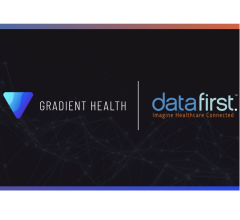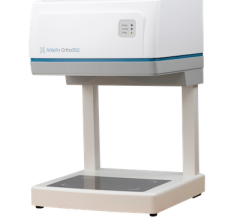
Mixed Reality Viewer technology turns almost any work area into a virtual, interactive space strengthening 3D visualization, interaction and understanding. (Image courtesy of Brainlab).
December 9, 2020 — the digital medical technology company, announced today that over 120 systems have been sold around the world leveraging the Mixed Reality Viewer from Brainlab on the Magic Leap spatial computing platform. The interactive 3-D patient data viewing software is a functionality of Elements Viewer and can be launched with just one-click, offering a streamlined user experience. The mixed reality functionality delivers on several levels including surgical planning, patient consultation and student education.
Mixed Reality Viewer technology turns almost any work area into a virtual, interactive space strengthening 3-D visualization, interaction and understanding. Expanding and advancing the utility of the company’s Elements Viewer, the mixed reality software is available for viewing a broad range of anatomy. Built in sensors in the head-mounted display scan and map the room, so that clinicians can mimic the planned surgery, placing 3-D anatomical models and 2-D image slices where they want in their space, whether that’s an office, a meeting room or even at home. The system allows for up to four people to collaborate and interact with each other in real time, either in the same room or even remotely within the same network.
“When you can use technologies like mixed reality during planning, you realize several benefits for the patient and the care team,” explained Veit Braun, M.D., director and professor at the Jung-Stilling Hospital, part of the Diakonie Hospital network in Siegen, Germany. “We’ve found that we can effectively lower the risk of surgical complications for almost any case when using the Mixed Reality Viewer software during planning. We see fewer of the distinct complications we saw before using this technology and mixed reality also helps shorten surgical times and patient time under anesthesia which is a great benefit.”
Clinicians are identifying both significant value in surgical precision and time savings from using Mixed Reality Viewer to support treatment planning. The technology is already in daily clinical use in Europe for multiple treatment indications including aneurysms and skull base tumors. Surgeons are increasingly incorporating Mixed Reality Viewer into their clinical routine for cervical fractures and craniomaxillofacial surgery given the complexity and need for detailed planning. The ability to enlarge the anatomy and to virtually walk around, or even inside of it, delivers a wholly new perspective that is so close to reality and so vivid that the industry will realize a paradigm shift over the next few years.
Mixed Reality Viewer technology from Brainlab is helping to foster cross-specialty clinical collaboration and open new insights for tumor diagnosis with pathology. Use with students is on the rise as well, benefitting not just medical students but also those in life sciences who plan to work in the medical technology industry. Mixed reality technology will help give engineering students an understanding of the anatomy and how a surgeon will use the technology, ultimately helping them in their future careers designing devices.
“Our Elements Viewer software is already in clinical use in nearly 1,500 hospitals around the globe,” commented Stefan Vilsmeier, Brainlab President and CEO. “The mixed reality functionality of the software elevates the surgical planning experience, helping to drive precision and productivity. 2020 has ushered in a global shift in how we all do business and the Mixed Reality Viewer is paving the way for remote surgical planning, patient engagement and vivid learning.”
For more information: www.brainlab.com


 November 18, 2025
November 18, 2025 









